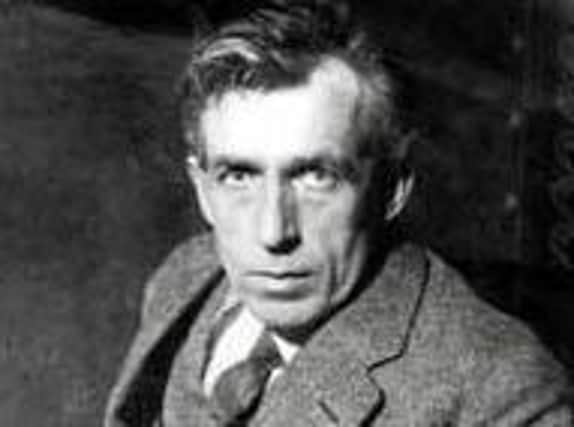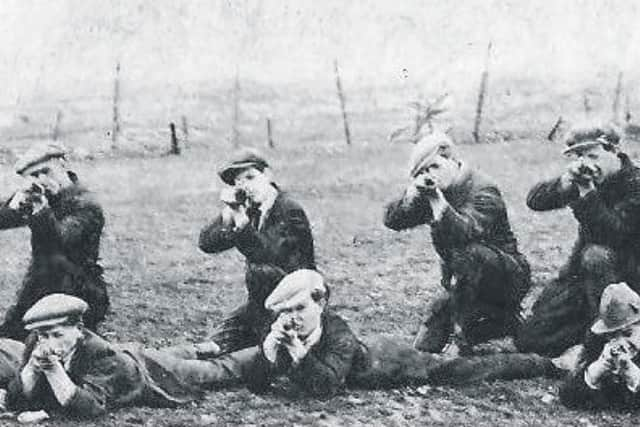100th anniversary of the recruitment of the Peadar O’Donnell Flying Column in Derry


These included the Meenbanad and Crolly train ambushes which were conducted by a Flying Column raised in Derry in December 1920 by the legendary IRA commander Peadar O’Donnell.
According to the accounts of those involved Derry was heavily occupied by Crown Forces and operations were consequently more difficult than in other parts of Ireland.
Advertisement
Hide AdAdvertisement
Hide AdThe city nonetheless remained an important logistics hubs and a source of men, explosives and munitions for the Tan War elsewhere.


Liam A. Brady, was O/C, of Fianna Éireann in Derry from 1920 to 1922. In a deposition to the Bureau of Military History provided years later he painted a picture of a tricky operating environment for the IRA.
“In the beginning of 1921 the forces of the Crown had occupied the principal buildings of our city and turned such places as the Courthouse, St. Columba’s Hall, St. Patrick’s Hall, Waterside, into fortresses, with sand-bag machine gun posts at their main entrances.
“Bligh’s Lane, the Letterkenny Road, Strand Road, and both sides of the Bridge which connects the Waterside with the rest of Derry all had their machine gun posts, built of sandbags and steel shutters. Streets were cordoned off frequently and pedestrians held up and searched. While this was happening the IRA were drilling, training, especially in the handling of firearms.
Advertisement
Hide AdAdvertisement
Hide Ad“Big events were expected in the city and large quantities of rifles, explosives and bombs were being accumulated. A select number of the Engineering section got orders to start work on a special job,” he told the bureau.
Explosives - Irish TNT, ‘Irish Cheddar’, ‘Warflower’ and blasting gunpowder - were being stored in the Shamrock Hall in the Bogside and Brady suggested there had been plans to take out key infrastructure and communications in the city.
“The Bridge which spans the quarter mile broad River Foyle and connects the Waterside with the rest of the City was measured and preparations made for its destruction by explosives.
The Bridge on the Buncrana Road known as the Tunnel was also measured and the amount of explosives for its destruction was calculated,” he revealed, although as it turned out the bridge would ultimately escape the war unscathed.
Advertisement
Hide AdAdvertisement
Hide AdSeamus McCann joined the Irish Volunteers in Derry in 1918. He told the BMH there were about seven ‘old-timers’ who had been members of the Volunteers since the army’s foundation in 1913 and that they had kept the organisation going in the city.
These were John Fox, Patrick Shiels, Seamus Kavanagh, Patrick Hegarty, Ned MacDermott, Joe Flanagan and Charlie Breslin. By the turn of 1920/1921 McCann was one of a number of men recruited into a Flying Column by Peadar O’Donnell, who was commander of the 2nd Battallion of the Donegal IRA.
“I attended a meeting of the IRA in the Shamrock Hall, Derry, in December, 1920. It was at this meeting that I first met Peadar O’Donnell. His intention at this meeting was to make arrangements for to take a Flying Column into Co. Donegal, if sufficient Volunteers were available in Derry to man a Column. A number of men volunteered for this Column,” McCann declared.
Other Derry men recruited to the Peadar O’Donnell Flying Column were Alfie McCallion, William Cullen and James Taylor, according to McCann, although Brady gave evidence that Frank Shiels, Pat McCallion and Frank Martin were also members. In the spring a second Flying Column under the command of Derry man Charlie McGuinness would later go on active service in the Donegal area.
Advertisement
Hide AdAdvertisement
Hide AdAfter the meeting in the Shamrock Hall arrangements were made for members of the Column to leave Derry the following Saturday night. In Brady’s recollection the Fianna were involved in ensuring its safe passage out of Derry and into Donegal via Bligh’s Lane.
“On December 29, 1920, I was asked by the O.C. for the city to bring twenty Fianna Boys to Bligh’s Lane and to arrange them by extended order that they would reach almost to Holywell Hill. Each boy seeing the other from a distance, they were to keep watch and on the approach of enemy forces, they were to make a sign or whistle.
"In this way the full length of the road was carefully watched. While the first Column, known as Peadar O’Donnell’s Column was making their way out of Derry up the old brick field and through fields until they reached the Letterkenny Road which they crossed in the direction of Newtowncunningham and on to Manorcunningham where they were met by the local scouts who had refreshments ready for them,” Brady related.
In McCann’s version: “Alfie McCallion and a few Volunteers conveyed the rifles and ammunition for the Column to the top of Bligh’s Lane on Saturday night. All roads leading from the city were held by British military (the Dorsets); so we did not attempt to leave that night.
Advertisement
Hide AdAdvertisement
Hide Ad"On Saturday night we got going. Between Derry and Newtowncunningham McKee, Sullivan and myself lost our way. J. Deviney of Newtown was the Column guide. We tramped the main road until we came to near Letterkenny.
"It was now beginning to get clear in the morning so we went into an old coal shed near the Post Bridge and left our rifles down and rested on some straw for a short while. We discussed our situation and it was decided that I should go into Letterkenny and get in touch with some of our friends there.”
Safely out of Derry the men made their way to West Donegal and were soon busy harassing British forces in the area.
Brady explained: “A train carrying British Troops was ambushed at Crolly, Co. Donegal where a stiff fight between the two Forces took place. Another attack on a Troop Train, leaving Burtonport for Derry took place at Kincasslagh on February, 14, 1921. Several R.I.C. Barracks were attacked and Lieutenant Bracen of the Dorset Regiment was arrested in Sweeney’s Hotel, Dungloe.”
Advertisement
Hide AdAdvertisement
Hide AdMcCann took part in ambushes at Meenbanad and Crolly in the Rosses that January. Describing the first operation he stated: “We were settling down in our billets for the night when Peadar O’Donnell came in and said, ‘Boys, put on your boots. A troop train is on the way towards Burtonport!’
“We all got ready for the road and were taken by P. Bonner’s car to the town of Dungloe where we met Joe Sweeney and Anthony McGinley. Those officers had the local IRA ready waiting for us. We all started in the direction of Meenbanad Railway Station at the double.
"We moved to a cutting about 150 yards from the station and, as we had not time to lift the rails in order to stop the train, we used large boulders to block the railway line and we then lined ourselves on each side of the cutting. In this operation the Derry Flying Column were armed with rifles and hand grenades and the Dungloe men were armed with shotguns.”
It did not take long for the train to arrive at which point the IRA was ready, was how McCann told it.
Advertisement
Hide AdAdvertisement
Hide Ad“As soon as it came to our position all our men armed with bombs used them endeavouring to put them into the carriages. Then fire was opened with rifles and shotguns. The exchange of fire lasted for some time, the military replying to our fire from the engine tender of the train.
"This fire forced our men to withdraw and the train succeeded in passing through the cutting. After this operation we fell back to the townland of Shiskinarone. From there we travelled to Croveghy Column Headquarters,” he stated.
One Derry Volunteer William Cullen lost his way after the fight and was captured by the British unarmed after managing to dispose of his rifle prior to his arrest. At Crolly similar tactics were deployed.
“The main body of the Column took up positions on the hills overlooking the station. Peadar O’Donnell, who was in charge of this operation, sent a scout to the station with orders to find out if there were civilians on the train and to send an agreed signal to inform us if there were civilians on the train.
Advertisement
Hide AdAdvertisement
Hide Ad“The train arrived at the station and Peadar received the signal, ‘No civilians’, and we got ready to attack. As soon as the train arrived within effective distance for rifle fire from our positions, we opened a rapid fire on the train. This fire was maintained until the train had passed through the hill from which our men were tiring. After the Crolly train ambush, the column evacuated Croveghy to a place in the heart of the mountains, named Brockagh,” according to McCann’s testimony.
You can read the depositions of former volunteers at https://www.militaryarchives.ie/collections/online-collections/bureau-of-military-history-1913-1921/witnesses/